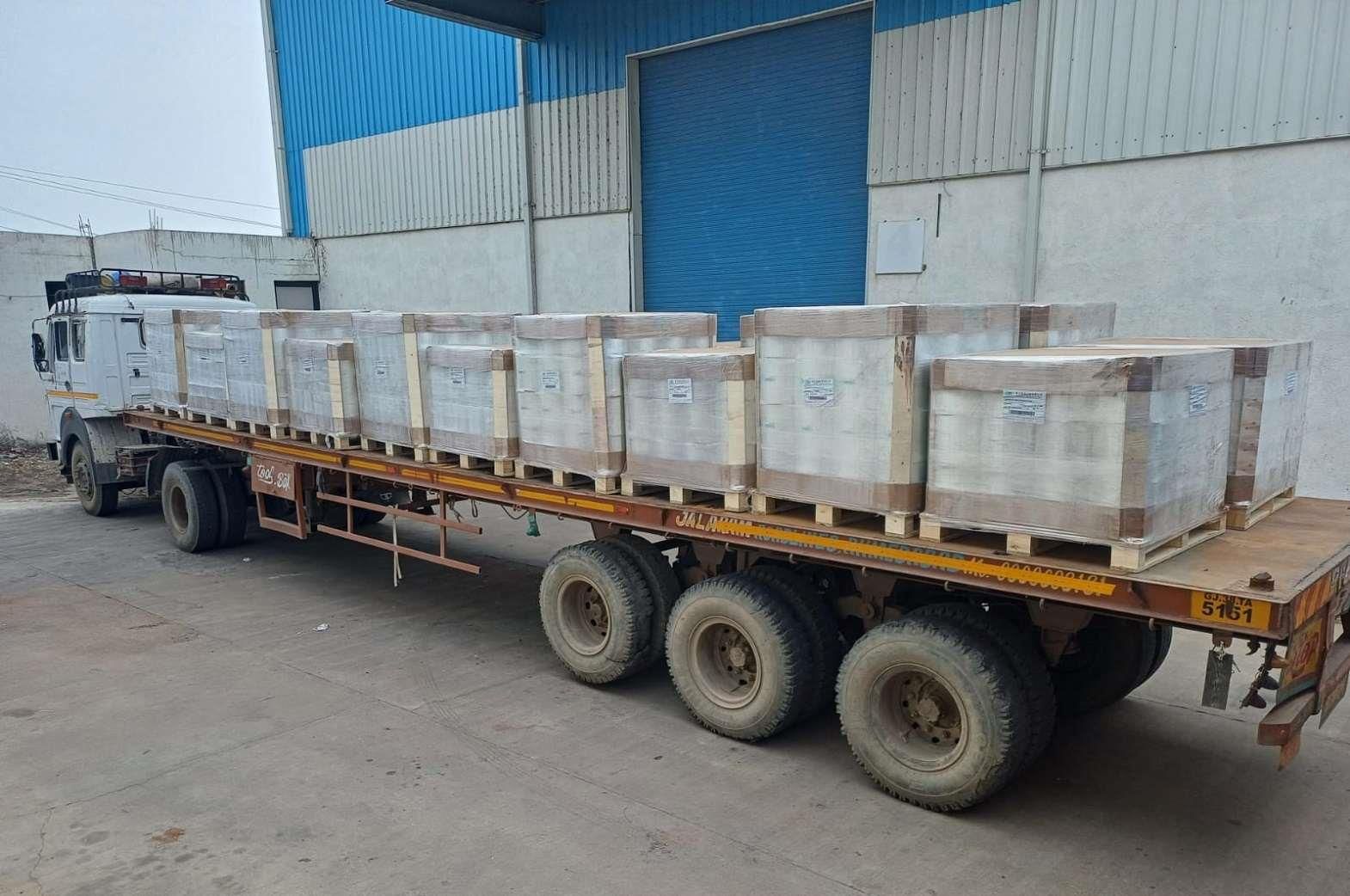Material handling and packaging are critical tasks in making an industry world-class and establishing its products as a brand in the market. It involves the movement of goods from one location to another, including protecting, safely storing, and controlling materials from manufacturing to distribution. For industries, material handling is a vital process that enhances efficiency and minimises process wastage.
The wide range of activities associated with material handling includes loading and unloading, transportation, inventory management, order fulfilment, packaging, and inventory valuation methods such as FIFO (First In, First Out) and LIFO (Last In, First Out).
When discussing the 5 Ms – Man, Material, Machine, Money, Method – Man plays the most crucial role in process control. There must be a Standard Operating Procedure (SOP) for each stage of manufacturing, along with effective checklists and photographic documentation of material inwards and outwards. These measures ensure that any irregularities or negligence by team members can be identified and addressed.
In the current era, packaging is becoming increasingly important as businesses face global challenges. In fact, packaging plays a significant role in providing customers with essential information about the packed material. Packaging not only ensures the safe keeping of goods but also enhances the visual appeal of the finished products while being cost-effective.
The objective of material handling and packaging is to ensure that materials are safely delivered to the desired destination in the right amount, at the right time, and with minimal MRC. Material Handling Cost, or Material Related Cost (MRC), refers to the expense of transporting goods from one place to another. The chart that estimates the number of goods handled between various workstations is known as the ‘Travel Chart’.
Packing During Manufacturing
A product made on a machine should be packed during manufacturing rather than being stored for a longer period. For example, fabric produced on a weaving loom should be packed in units of 100 kg net weight rolls as shown below.

These are the empty paper tubes having inside diameter 76 mm and thickness 3 mm. During the rainy season, thickness should be increased to 4 mm to 10 mm as it absorbs moisture from atmosphere, if stored for more time.

The fabric needs to be secured onto a paper tube by applying double-sided tape. This ensures a tight grip at the start of the winding process.

To protect the paper tube orifice from any loading pressure or damage at the extremities, standard plastic plugs should be inserted. These plugs will safeguard the paper tubes, ensuring smooth unwinding in the next process.

The final product for dispatch should be wound in a polyethylene cover and then packed as follows:
1. For local transport – pack in HDPE bags.
2. For long-distance dispatch or export – pack in boxes.

To ensure safe transportation, it is crucial to prevent jerks during container transit. To meet such requirements, the following packing methods are available:
Bubble Packing
We are all familiar with bubble wrap and its convenience. It has become popular due to its easy availability and ability to safeguard breakable products. However, the 21st century is moving away from excessive plastic use and banning single-use plastics. Bubble wrap is used to fill the gap between the product and the container, but we need a sustainable alternative.
To create gaps among pallets or cartons, air cushions, pillows, or inflatable structures can be used to prevent jerks during the transportation of highly sophisticated goods.
Hand Pallet Trucks with Hydraulic Systems
Hand pallet trucks with hydraulic systems are available for safely loading and unloading materials. These trolleys can bear loads of 1 ton, 2 tons, 5 tons, etc. Always choose a hand-operated trolley with a higher weight capacity than the material to be shifted. For example, if 2.5 tons of goods need to be loaded onto a trolley, its load capacity should be 3 to 3.5 tons to ensure safety.

Pallet Trolley and Ramps
A pallet trolley is used to keep materials at the ramp for further transportation by a forklift. When a ramp for a truck is unavailable, a manual stacker can be used to safely perform loading and unloading operations manually.
Various types of material handling ramps are available. If the nature of the business involves continuous loading and unloading, a fixed cemented ramp with edge protection can be constructed. The top boundaries of the ramp can be reinforced with an iron or metallic angle, which can be screwed in place. This ensures that the ramp remains protected even if a truck comes into contact with the surface.

The figure above shows a fixed cemented ramp with protection provided by an iron angle. Wooden or hard plastic pallets can be used to transfer goods safely into the container.
Importance of Brand
A brand is a product, service, or concept that is publicly distinguished from other products, services, or concepts so that it can be easily communicated and marketed. Brands are often expressed in the form of logos.
There is significant value addition to the same product through the style of sales. Let’s take the example of men’s shirts:
Footpath Sales: If a shirt is manufactured and placed openly on a footpath, customers will purchase it at a cheaper cost or at a fixed low rate per unit.
Middle-Class Market: If the same shirts are folded with accessories and well-creased, middle-class customers will purchase them at two to six times the rate per unit.
Niche Market: If the same shirts are folded and packed according to export norms and kept in an air-conditioned showroom with display models, trial facilities, refitting facilities etc, they will attract niche customers with specific product and service expectations. The value of the same product, with sophisticated handling and packing, will be significantly higher.
Moisture Absorbent

To keep materials dry, moisture absorbents should be used alongside hydrophilic materials. Hydrophilic means water-loving, while hydrophobic means resistant to water. Hydrophilic molecules get absorbed or dissolved in water, while hydrophobic molecules only dissolve in oil-based substances.


Ventilation fabric bags are available to keep vegetables, fruits, and fish fresh during transportation and storage.
Conclusion
For consistent value addition to any consumable product, the priority is quality within an affordable cost. Material handling and packing of final products can contribute to sales beyond the breakeven point, exceeding expectations. Benchmarking, continuous analysis, research and development, and cost-effective measures can elevate an organisation to world-class manufacturing status with effective implementation.
For high profit margins, branding is essential, along with attractive packaging. The following information and views are required on packed materials for customers:
1. Name of the company
2. Main item packing and inside components packing with material protection accessories like polyethylene covers, moisture absorbents, fungal protection etc.
3. Sticker on top or front showing product specifications
4. Date of manufacturing/expiry
5. Instructions such as ‘Keep Up’ (↑) or ‘Open at Sides’ (↔)
6. Every material must be kept on pallets (nothing should be kept directly on the floor)
7. Quantity (gross/net) in unit of measurement (UOM)
8. Packing list/slip
9. For delicate items, use thermocol boxes (which act as insulators for heat transmission), bubble packing, air cushions, and silica moisture control bags
10. The concepts of LIFO (Last In, First Out) and FIFO (First In, First Out) exist to help a company control the movement of its inventory
11. Both open and closed containers are available. Transportation charges are higher for closed containers. Besides the loading capacity of the container, it is important to load the material in a balanced way to maintain the centre of gravity. Additionally, tents for rain protection, tying with ropes, invoice/e-way bills with the driver (including any extra permission documents if required), and truck gross and loaded material net weight slips are essential.








Comments